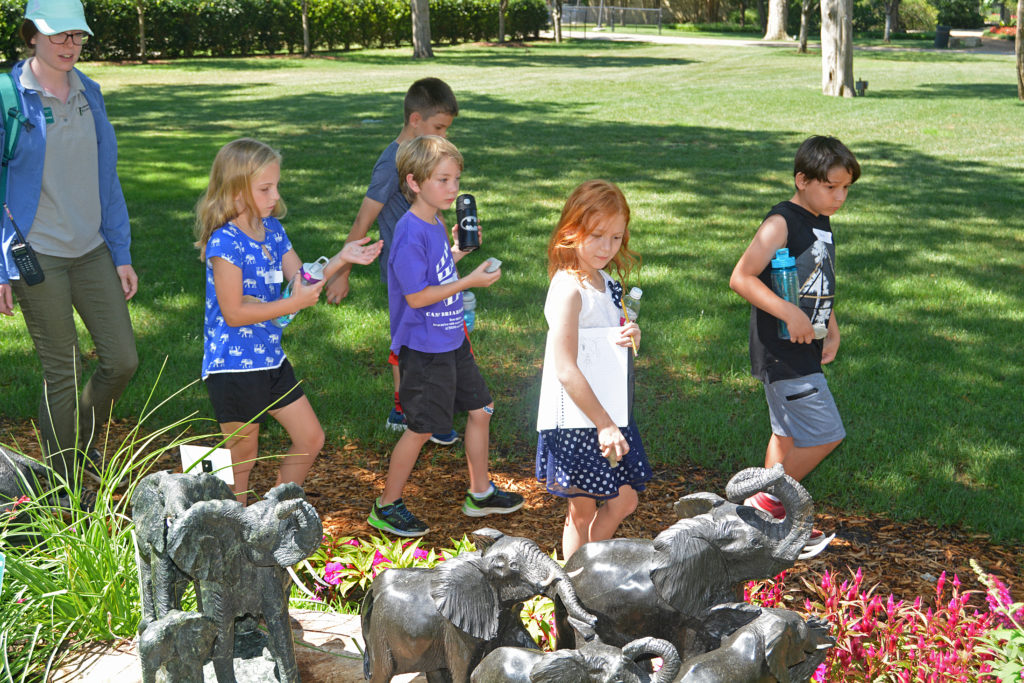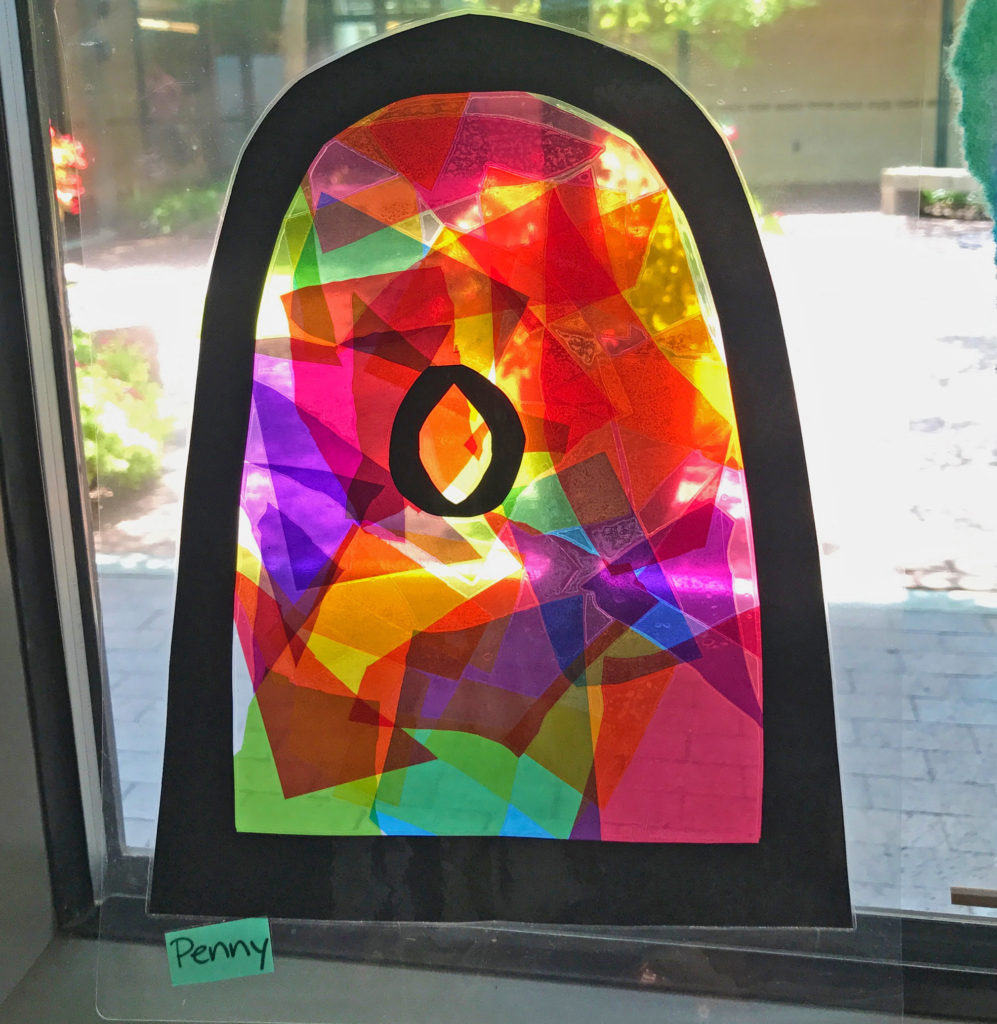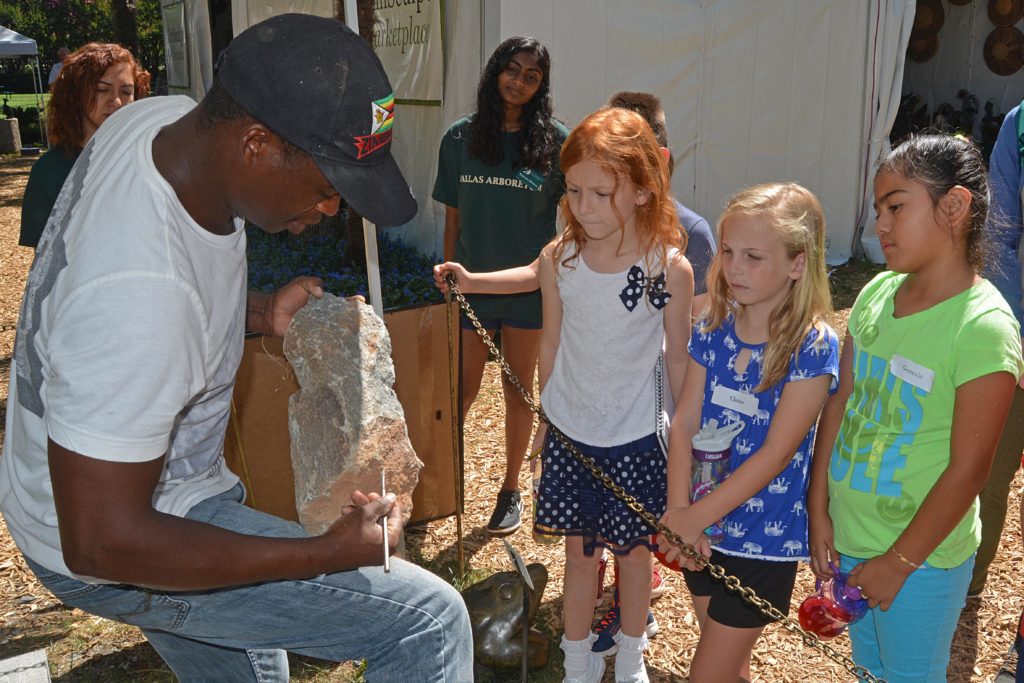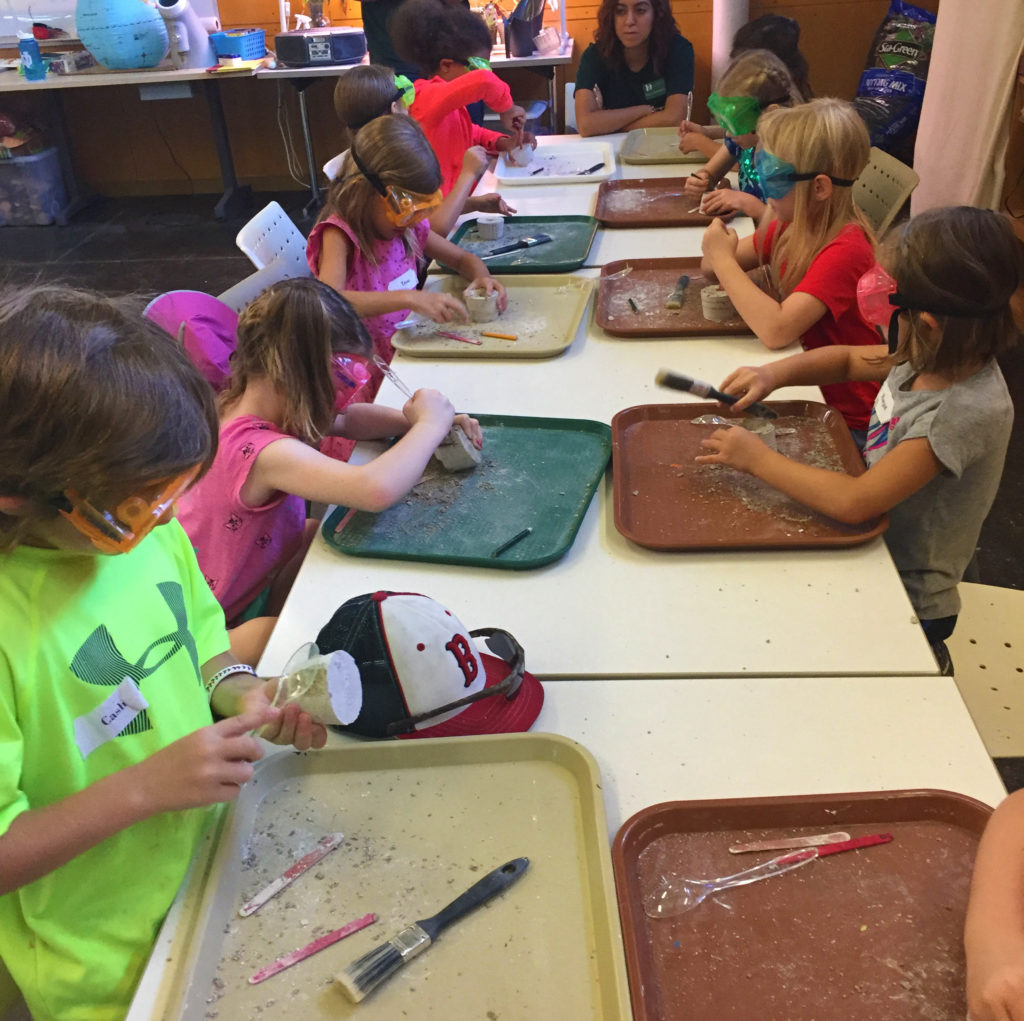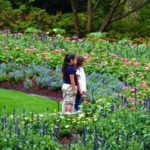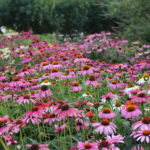Letting Students Get Wild about Zimbabwean Art & Nature at Summer Camp
Dallas Arboretum educators led seven weeks of summer campers through lessons about animals all over the world and the wonder of Zimbabwean stone sculpture, ZimSculpt.
How can you effectively use a traveling exhibit as a vehicle for scientific discovery and summer adventure? We capitalized on having two artists in residence, making them the centerpiece of a summer camp focused on habitats and art.
This summer, in conjunction with our ZimSculpt exhibit, which features over 100 stone sculptures in the garden and two artists-in-residence, the Education Department hosted seven weeks of Wild About Art & Nature summer camp for children ages 4 to 4th grade. Research tells us that hands-on learning and context are essential to long-term knowledge growth, so our education team crafted a camp curriculum that would offer just that.
ZimSculpt Provided the Hands-on Learning Context
Our educators led campers on educational journeys of discovery based on the unique plants specimens found throughout the Arboretum that are native to different continents around the globe, including Australia, Asia, Europe, South America and Africa. Each day students explored the garden and learned about the adaptations that help plants survive in their environments. They also learned about the animals that call those distinct places home. Lessons involved a combination of scientific exploration, literature, music and dance.
Students then learned about an art form that originated from the same region. For example, campers created clap sticks, a traditional Aborigine instrument after learning about Australia.
The highlight of each week was visiting the ZimSculpt artists in the Pecan Grove, where we have a large art market and plantings that reflect the typical Zimbabwe garden. Students learned about the stone carving process from our resident sculptors, Aron and Passmore. Students even got to take a piece of chipped stone home with them.
The campers then created their own stone carving using a mix of sand and plaster created by Lynn Wright, the Arboretum program teacher who designed the Wild About Art & Nature camp curriculum, and who also happens to be a lover of trying new art forms, herself.
“My 3rd and 4th grade campers really enjoyed weaving after learning about textiles created in the Andes from alpaca and llama wool,” says program specialist Lauren Koerner. “Learning about the plants and animals in each region really helped provide more context for the art the campers created.”
Related Posts
Comments are closed.


